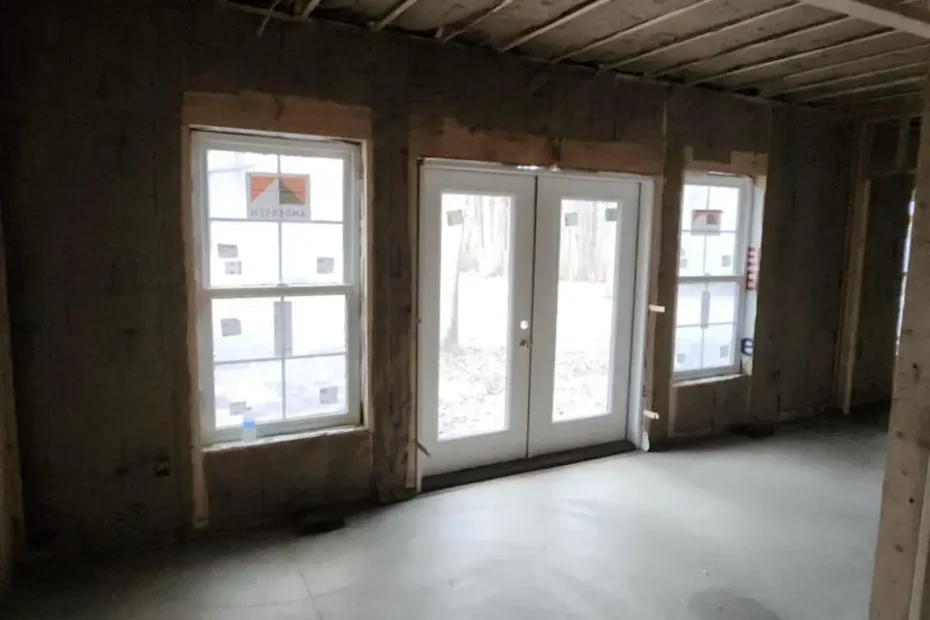As the humid summer months roll into the Midwest, maintaining a comfortable and healthy indoor space becomes a top priority for many. One of the key elements that can make a significant difference in indoor air quality is insulation. You might be surprised to learn just how much good insulation can impact the air you breathe and the overall comfort of your home. Let’s dive into how insulation plays a vital role in creating a better indoor environment during those hot, sticky months.
Understanding Humidity and Air Quality
To appreciate the importance of insulation in maintaining indoor air quality, it’s essential to understand how humidity affects the air we breathe. High humidity levels can lead to the growth of mold and mildew, which can adversely impact our health. These mold spores can wreak havoc, triggering allergies and respiratory issues. That’s where insulation steps in—proper insulation helps to regulate humidity inside our homes, creating a barrier against the outdoor dampness that tends to seep in.
Moreover, when humidity levels soar, your indoor comfort decreases significantly. Uncontrolled moisture can make your air conditioning work overtime, leading to higher energy bills. Insulation plays a pivotal role in keeping that moisture at bay, providing a more stable environment and ultimately making your space more pleasant and inviting. Therefore, understanding this relationship sets the foundation for appreciating how insulation can protect both your health and your home.
How Insulation Prevents Moisture Buildup
Insulation acts as a barrier against outside moisture, significantly reducing the chances of condensation forming within walls and ceilings. This is crucial for preventing common humidity-related issues, particularly in the Midwest where summer storms can lead to more moisture in the air. When insulation is adequately installed, it ensures that the warm, humid air cannot infiltrate your home, thus protecting the structural integrity of your property.
Furthermore, modern insulation materials often come with moisture-resistant properties. This means that even during the muggiest days, your insulation will work to keep your indoor air fresh and clean. Think of it as a shield protecting your home from the elements outside. By preventing the growth of mold and mildew, insulation allows you to breathe easier while also lessening the burden on your HVAC system. Not only does this extend the life of your systems, but it also enhances your overall indoor experience.
The Role of Insulation in Temperature Control
Good insulation not only keeps the heat out during summer but also maintains a more stable indoor temperature. This stability is essential for reducing the stress on air conditioning systems, leading to better air circulation and improved air quality. Picture this: a well-insulated home feels cool and refreshing even during a heatwave. Your air conditioning can work more efficiently, meaning less energy consumption, lower bills, and a reduced carbon footprint.
In addition, a steady temperature can help in balancing humidity levels. When temperatures fluctuate dramatically, it can create a breeding ground for moisture traps. By keeping your home at a consistent temperature, you effectively control the humidity levels, protecting your home’s air quality throughout the long and often sweltering Midwest summer. It’s a win-win scenario, where both your comfort and air quality are optimized.
Minimizing Allergens and Pollutants
With effective insulation, you can help keep dust, pollen, and other allergens from entering your living space. Sealing gaps and ensuring your insulation is intact can dramatically reduce the pollutants that accumulate indoors, leading to a healthier environment. This is particularly vital for allergy sufferers, as summer months can bring a flurry of pollen and dust from outside. Insulation plays a key role in acting as a barrier against these airborne irritants.
It’s not just seasonal allergies that benefit from good insulation. A properly insulated home curtails the entry of pollutants year-round, especially those that may seep in during more vulnerable moments, like when windows are open or during the heating process. Thus, investing in your home’s insulation is not just about comfort; it’s about fostering a healthy living environment for you and your family. The importance of maintaining a clean air supply can hardly be overstated—it’s a fundamental aspect of well-being.
Sustainable Insulation Options for Better Air Quality
Choosing sustainable insulation materials, such as cellulose or wool, not only benefits the environment but also supports better indoor air quality. These natural materials help regulate moisture levels naturally and are less likely to contain harmful chemicals often found in traditional insulation. When you opt for greener materials, you’re investing in a solution that not only enhances your immediate comfort but is also better for your overall health.
Additionally, sustainable insulation tends to have a lower carbon footprint during its production, which aligns well with the growing need for environmentally conscious decisions. As our awareness of health and environmental issues increases, using sustainable materials in home construction and upgrades becomes increasingly relevant. In fact, creating a home that’s both energy-efficient and healthy can empower others to make similar choices, leading to a broader impact on community well-being. By taking that route, you not only improve your own health but also contribute to a lasting positive change.

